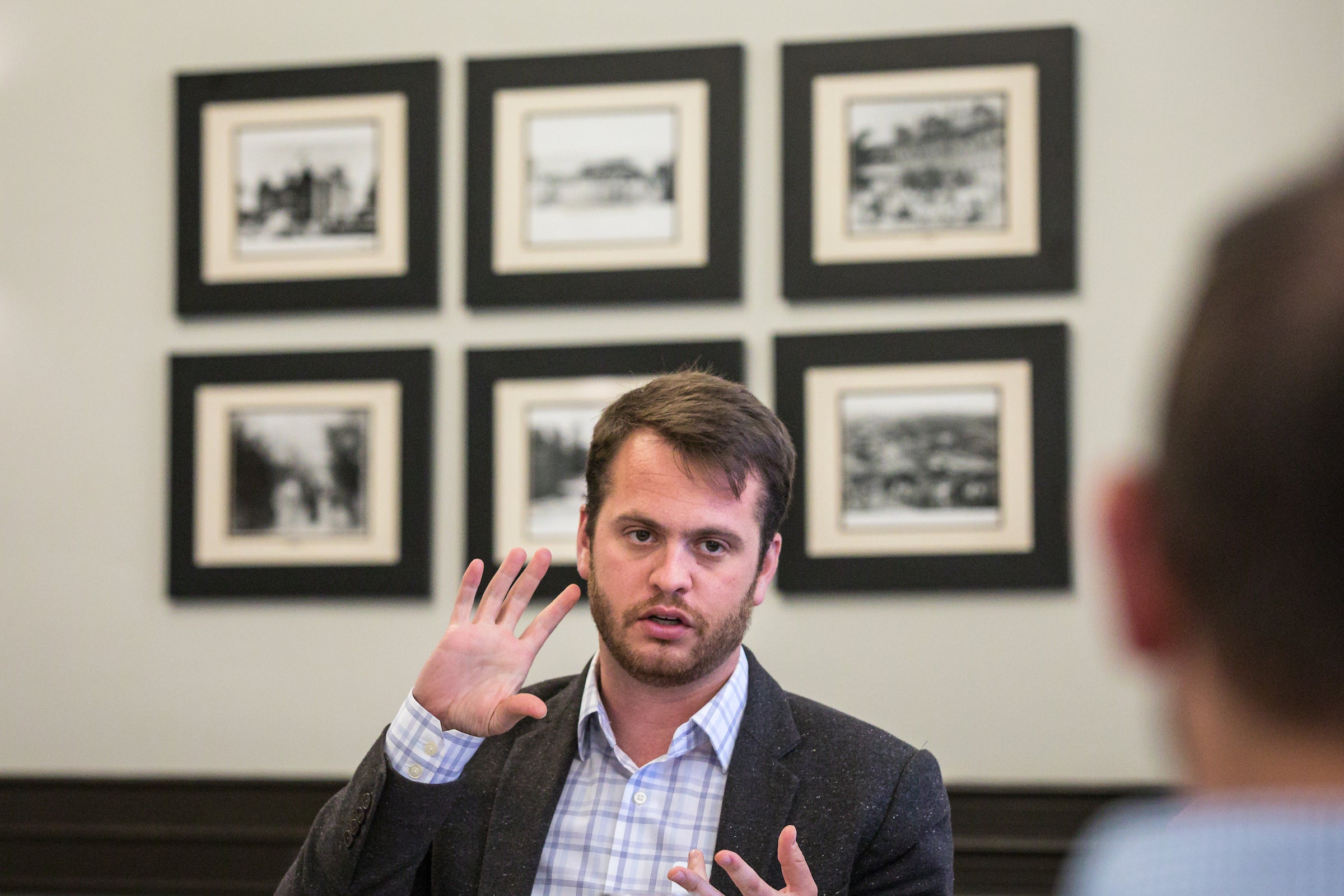Team launches initiative to develop viable market for waste carbon dioxide

How do you create a way to take carbon out of the air and make money doing it?
It’s a wicked problemA wicked problem is a problem that is difficult or impossible to solve because of incomplete, contradictory, and changing requirements that are often difficult to recognize. that will take decades to solve. One member of a team tasked with tackling it compared it to creating agriculture.
The Center for Carbon Removal, in partnership with Arizona State University and several other research institutions, launched an audacious initiative this week with the goal of developing solutions that transform waste carbon dioxide in the air into valuable products and services.
“Solving a problem with a solution that doesn’t exist” is how Julio Friedmann described it.
“We have urgency around this task,” said Friedmann, a senior fellow at the Lawrence Livermore National Laboratory who serves as the lab’s chief expert in energy technologies and systems. He recently served as principal deputy assistant secretary for the Office of Fossil Energy at the Department of Energy. “I’m seeing windows of opportunity start to close. … We’ve got to get the tons out of the atmosphere, and we’ve got to make money doing it.”
In addition to ASU, universities involved in the initiative include Iowa State and Purdue, both of which have strong agricultural, forestry and economics programs as well as leading engineering, materials science and environmental science programs. With extensive expertise in alternative energy, Lawrence Livermore National Laboratory — which also participated in the launch event for this initiative — is a partner in the venture as well.
“We are talking about nothing less than a paradigm shift,” said David Laird, professor of agronomy at Iowa State and an expert in the interactions between soil and biochar, charcoal used as a soil amendment.
Noah Deich, executive director of the Center for Carbon Removal, said that this initiative for a “New Carbon Economy” is urgently needed to “develop new businesses and reinvent the industries that powered the last industrial revolution — like manufacturing, mining, agriculture and forestry — to create a strong, healthy and resilient economy and environment for communities around the globe.”
The idea for the carbon-economy initiative came from discussions between Noah Deich (pictured Tuesday at the team workshop in Tempe), executive director of the Center for Carbon Removal, and ASU President Michael Crow on ways to rethink the climate challenge as a new economic opportunity. Photo by Charlie Leight/ASU Now
At the launch event, assembled partners agreed to produce a roadmap that will outline the specific steps for translating relevant research into business and policy action. The roadmap will consider design principles for engaging multiple parts of the economy in capturing and concentrating carbon dioxide, ranging from biological approaches such as agriculture and forestry, to engineered approaches such as fuel, chemical and material manufacturing using carbon dioxide as a feedstock.
“There are maybe 100 people in the world who can talk about a carbon economy at the scale we’re talking about,” said Roger Aines, a senior scientist in the Atmospheric, Earth and Energy Division at Lawrence Livermore. “It’s a brand-new thing.”
The idea for the initiative came from discussions between Arizona State University President Michael Crow and Deich on ways to rethink the climate challenge as a new economic opportunity.
“Today there are a number of voices, narratives and uncertainties that challenge us in developing a focused innovation agenda for dealing with the growth of atmospheric carbon dioxide,” said Betsy Cantwell, ASU vice president for research development. “Working together with the Center for Carbon Removal, we will develop a roadmap leading to real, valuable and lasting uses for carbon in the air. We hope to implement the roadmap in a timeframe that will rapidly impact global carbon futures.”
Top photo: Betsy Cantwell, vice president for research development within ASU's Knowledge Enterprise Development, guides the discussion at the New Carbon Economy Consortium on Tuesday. The participants, including public- and private-sector researchers as well as academics, worked toward the end of the workshop to create a vision statement about reversing the carbon paradigm to profitably harvest CO2. Photo by Charlie Leight/ASU Now
More Law, journalism and politics

How to watch an election
Every election night, adrenaline pumps through newsrooms across the country as journalists take the pulse of democracy. We gathered three veteran reporters — each of them faculty at the Walter…
Law experts, students gather to celebrate ASU Indian Legal Program
Although she's achieved much in Washington, D.C., Mikaela Bledsoe Downes’ education is bringing her closer to her intended destination — returning home to the Winnebago tribe in Nebraska with her…

ASU Law to honor Africa’s first elected female head of state with 2025 O’Connor Justice Prize
Nobel Peace Prize laureate Ellen Johnson Sirleaf, the first democratically elected female head of state in Africa, has been named the 10th recipient of the O’Connor Justice Prize.The award,…
